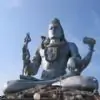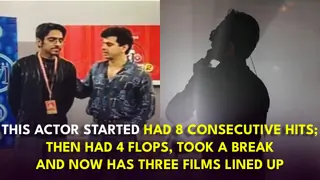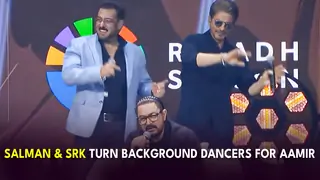Friends my information is very limited, there are other ragas which are not listed below, you can certainly add to the topic.
The combination of several notes woven into a composition in a way, which is pleasing to the ear, is called a Raga or Raag. The raga is an Indian scale which utilizes varying ascending and descending patterns ' certain notes on the way up and certain notes on the way down ' but always in the set sequence. The raga never has less than five notes - the minimum required for a tune. Each raga creates an atmosphere, which is associated with feelings and sentiments. Any stray combination of notes cannot be called a Raga. At a more academic level, it is a musical composition that functions within a structure and follows certain rules with relation to the kind of notes used in it.
According to Indo Pak ancient theory, the musician's task in exploring mood is made easier if the performance takes place at the time and in the atmosphere appropriate to the raga. So if a raga that embodies the atmosphere of spring is played in spring it will be more effective than if it were played in winter.
Time based ragas are divided into four types:
1. Twilight raga when the notes re and da are used such as Raga Marwa and Poorvi.
2. Mid-day and Mid-night ragas that include the notes ga and ni (komal).
3. Ragas for the first quarter of the morning and night that include the notes re, ga, da and ni
4. For the last quarter of the day and night, the raga includes the notes Sa, ma and Pa.
The entire ragas are divided into two groups:
1. Poorvi Ragas
2. Uttar Ragas
The Poorvi Raga is sung between 12 noon and 12 midnight. The Uttar Raga is sung between 12 midnights and 12 noons. The variations on the dominant or "King" note helps a person to find out why certain raga are being sung at certain times.
Classification of Ragas under five principals:
* Hindol(There are also five ragnis for each class)
* Deepak,
* Megh,
* Shri,
* Maulkauns,
Pakaad or bandish are the most dominating notes of a given raga. Each raga has its own bandish. Whenever a music director composes a song based upon a given raga, he makes sure that he uses the bandish of that raga. This is the precise reason why two songs composed on the same raga sound similar. In a way, bandish is a common factor within all the tunes composed on a given raga.
If you listen to a vocal song based on a raga, say on radio or a in a computer, and you want to identify the raga of this song, then you should listen to it while you are farther away, say about 30 to 50 feet away from the player. It has been observed that you can recognize the raga of a song while listening to it from a farther distance rather than by listening to it closer. This is because as you go farther from the source of vocal sound, you do not listen to any words from the song, but you only hear the dominating notes or bandish of the song.
Raga Kafi
Raga Kafi is a midnight raga. Raga Kafi is derived from thaat Kafi (Parental scale). Its vaadi sur is P and samvaadi sur is S. Its pakad is S-R-R-g-m-P. Its Jati (class) is Sampoorn-Sampoorn. Its similar raga is gara.
Songs of Raga Kafi:
Tumhaaraa pyaar chaahiye mujhe, Bappi Lahri - Film Toote Khilone
Pyar bhare do sharmeele nain, Mehdi Hassan - Film Chaahat
Rim jhim rim jhim pere phawar, Noor Jehan, Film Koyal
Jalte hain arman mera dil roota hai, Noor Jehan - Film Koyal
Dil mein ho tum, aankhon mein tum, Bappi Lahri
Raga Bheemplasi
Raga Bheemplasi is a afternoon raga. Raga Bheemplasi is derived from thaat Kafi (Parental scale). Its Vaadi sur is m and Samvaadi sur is S. Its behave is Shadj-Madhym. Pakad is 'n-S-g-m-P-g, m-g-R-'n-S. Its Jati (class) is Audav-Sampoorn.
Songs of Raga Bheemplasi:
Zindagi mein to sabhi pyaar kiya karte hain, Taal Dadra, Mehdi Hassan
Ae Ajnabi Tu Bhi Kabhi - Film Dil Se
Khilte Hain Gul Yaha - Film Sharmilee
Dil mein tujhe bithake puja - Film Fakira
Raga Piloo
Raga Piloo is afternoon raga. Raga Piloo is derived from thaat Kafi (Parental scale). Its vaadi sur is g and samvaadi sur is N. Its behaav is Shadj-Madham. Pakad is g-m-d-P-g-S-'N-S. Its Jati (class) is Audav-Audav. Its first sur will start in mandr ' madh saptak and will reach madh in middle octave.
Kabhi aar kabhi paar laaga teer-e-nazar - Film Aar Paar
Ai meri Zohara zabeen, tujhe maaloom nahi, Film - Waqt
Chura liya hai tumne jo dil ko, Film - Yaadon Ki Baraat
Raga Shivranjni
Raga Shivranjani can be played any time. Raga Shivranjani is derived from thaat Kafi (Parental scale). Its Jati (class) is Audav-Audav. Its first sur will start in Madh saptk in middle octave.This raga is extremely popular among instrumentalists. This raga is known to evoke the moods of romance and sorrow. Arohi and Amrohi notes of the raga Shivranjani are very close to raga Bhoopali except that in raga Bhoopali, the GA note is shudh whereas in raga Shivranjani, the GA note is komal which is represented as lower case ga. Also vaadi and Samvaadi notes are different in raga Shivranjani compared to raga Bhoopali. These differences set apart raga Shivranjani from raga Bhoopali. Obviously, both ragas sound totally different. Sometimes liberty is taken with raga Shivranjani and shudh Gandhar (Ga) may be used by some musicians.
Songs of Raga Shivranjani:
Mere naina savan bhado, Film - Mehbooba
Bahaaro phool barsaao, Film - Suraj
Kahin deep jale kahin dil, Film - Bees Saal Baad
Raga Darbari
Raga Darbari is derived from Thaat Asavari (Parental scale). Its Vaadi (main note) is R and Samvaadi (second in importance) is P. Its Jati (class) is Sampoorn-Sampoorn; We do not count repeated notes while defining jati. Its time of performance is early night. Its Pakad is S-R-g, R-S-'d, 'n-R-S. Its bhaav is Shadj-Madham. Andolan is required on komal Ga and komal Dha, particularly in arohi.
Songs of Raga Darbari
Bahon Ke Darmiyan - Film Khamoshi
Pag ghoongroo bandh - Film Namak Halal
Raha gardishonmen haradam - Film Do Badan
Raga Jaunpuri
Raga Jaunpuri is derived from Thaat Asavari (Parental scale). It can be played in daytime. Its Vaadi (main note) is S and Samvaadi (second in importance) is P. Its Jati (class) is Shadav-Sampoorn; Its time of performance is morning till noon. Its Pakad is dm, PdnS'-d-P, and d-m-P, R-m-P. Its bhaav is Shadj-Pancham. Is is played in madh - tar saptk. Important annuvaadi is n.
Songs of Raga Jaunpuri
Muhabbat ki jhoothi kahani pe roye, Film Mughal-E-Azam
Meri yadmen tum na ansu bahana, Film Madhosh
Tal is a framework in time. Tal is structured into two or more sections, each having the same or different numbers of beats. The particular arrangement of audible sounds and silence is what defines the unique character of each Tal. Since drums are used to maintain the flow of Tal in music and dance, the character of Tal becomes vividly when manifested on a drum. The technical term for this manifestation of Tal on a drum is theka [DU].
Here is the theka-s of those Indian Tal-s that I think they can be used in Persian music.
Dadra: Dadra is in 6 beats divided into 3+3.
Dha Dhi Na, Na Tu Na.
Rupak: Rupak is in 7 beats divided into 3+2+2.
Tin Tin Na, Dhi Na, Dhi Na.
Kaharba: Kaharba is in 8 beats divided into 4+4.
Dha Ge Na Ti, Na Ke Tu Na.
Ektal: Ektal is in 12 beats divided into 3+3+3+3.
Dhin - Dhin - Dha Ge, TeRe KeTe Tun - Na -, Kat - Ta - Dha Ge, TeRe KeTe Dhin - Na -.
Dipchandi: Dipchandi is in 14 beats divided into 3+4+3+4.
Dha Dhin -, Dha Dha Dhin -, Na Tun -, Dha Dha Dhin -.
All Tal-s that are in 16 beats are very suitable for Persian music especially the most popular Indian Tal, Tintal.
Tintal: Tintal is in 16 beats divided into 4+4+4+4.
Dha Dhin Dhin Dha, Dha Dhin Dhin Dha, Dha Tin Tin Na, Ta Dhin Dhin Dha.



























